On an earlier post, I discussed the need to manage beavers on our timber farm. While the beaver furs have little market value these days, they are still really nice furs. I think they are worth the effort to process. It is hard for me to totally waste such a beautiful animal. They need managing but they deserve respect. In this post I will describe how these animals were recycled into a beautiful blanket that has provided some toasty evenings on the couch watching TV.
First you need to start with beavers. Many beavers! I eventually used eleven for this project. Fortunately the clues of their whereabouts are not subtle. Just look for the downed trees, the feed beds, and of course their signature dams. Damn!
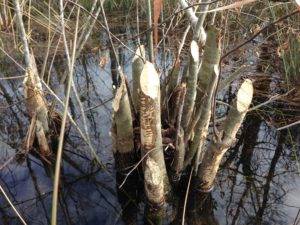



Body grip traps are the traps of choice and give almost instant kills. Here are before and after pictures of a typical trap-set at a place where the beavers cross over a dam.
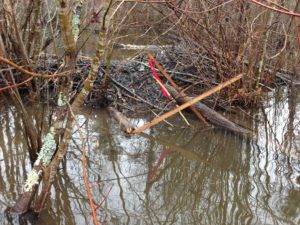
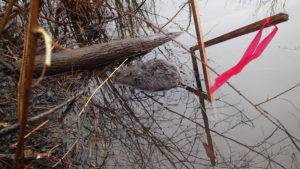
Carrying the animal out of the swamp 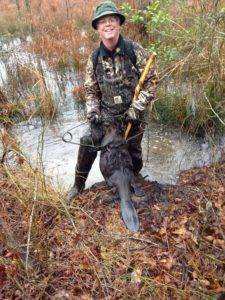 is just the beginning of the labors. Next comes the skinning, fleshing (removing fat and meat from the leather side of the fur), and stretching on a board to dry.
is just the beginning of the labors. Next comes the skinning, fleshing (removing fat and meat from the leather side of the fur), and stretching on a board to dry.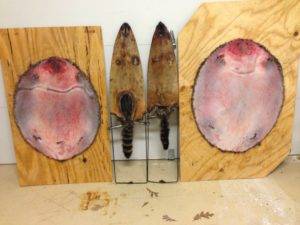 I will spare you the details of the process, but here is what they look like when “boarded”. I still find it intriguing that they stretch out into a perfect oval.
I will spare you the details of the process, but here is what they look like when “boarded”. I still find it intriguing that they stretch out into a perfect oval.
After they dry, off to a tannery they go for garment tanning. This is not a job for a do-it-yourselfer. Leave it to the professionals. The furs return soft and luxurious, but a bit wrinkled.


So now that I had collected quite a few beaver furs, the challenge was how to take oval furs of different sizes and convert them into a rectangular blanket. Out came the graph paper. 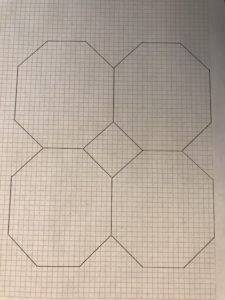 After a bit of trial and error, I came up with a pattern centered around octagons, and accented with squares and triangles. It was all starting to come together in my mind.
After a bit of trial and error, I came up with a pattern centered around octagons, and accented with squares and triangles. It was all starting to come together in my mind.
In order to transfer the patterns to the tanned furs, they were flattened again by dampening with clean water and tacking back on the boards originally used to stretch them. The patterns were traced on the leather with a pen. Carefull attention was paid to the lay of the fur so it would flow smoothly from top to bottom when the sewing was completed. Tic marks were added at measured intervals around the edges to make it easier to keep the pieces aligned while stitching. The patterns were cut using a Havalon knife with disposable scalpel-like blades. They cut like a hot knife through butter (sorry for the cliché, but they really did).
 All the fur pieces were hand stitched by me, leather to leather using a trocar needle (“glovers” needle from Joanne Fabrics using their 40% off one item coupon). For the thread I used braided fishing line (dark-colored 8# test Berkley Fireline).
All the fur pieces were hand stitched by me, leather to leather using a trocar needle (“glovers” needle from Joanne Fabrics using their 40% off one item coupon). For the thread I used braided fishing line (dark-colored 8# test Berkley Fireline). I made small blanket stitches.
I made small blanket stitches. 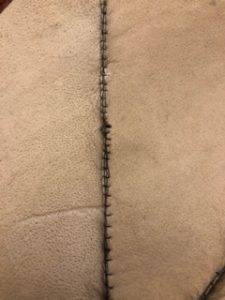 Many small stitches. I will say it again….many small stitches. I sewed while watching TV. I sewed while sitting in the waiting room for my wife’s third knee surgery. I was on a mission. The goal was to finish by January 28, Jeanette’s birthday.
Many small stitches. I will say it again….many small stitches. I sewed while watching TV. I sewed while sitting in the waiting room for my wife’s third knee surgery. I was on a mission. The goal was to finish by January 28, Jeanette’s birthday.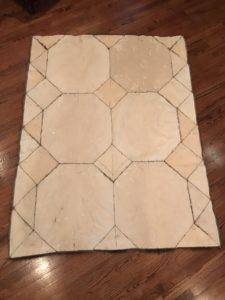
While I was finishing up the fur work, we went on a search for the perfect material for the backing. The Goldilocks fabric: not too thick and heavy, not too light and flimsy, just right. We settled on a tapestry drapery fabric that they had on clearance at Hobby Lobby. It would do just fine.
It would do just fine.
The sewing machine. Something new to learn. I had to sew hems around the fabric. I am very glad I don’t have to sew my  own clothes! After hemming the fabric it was stitched to the leather side of the fur by placing the fur side to the good side of the fabric. They were held together with binder clips from staples. Once again, a zillion small stitches. As I worked my way to the bottom, the blanket was turned right side out and the last part of the bottom edge closed.
own clothes! After hemming the fabric it was stitched to the leather side of the fur by placing the fur side to the good side of the fabric. They were held together with binder clips from staples. Once again, a zillion small stitches. As I worked my way to the bottom, the blanket was turned right side out and the last part of the bottom edge closed.
Finished!
The blanket turned out pretty well if I must say so myself. Finished in time for Jeanette’s birthday. It was a huge hit with her.
We did learn an interesting fact. Beaver blankets have a special ability to make you fall asleep!


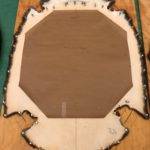

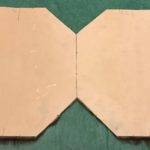
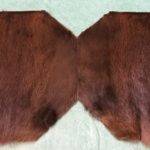

What a luxurious blanket! And what an incredible amount of planning and hard work for such a thoughtful gift!
Thanks Katie. It gave me a lot of satisfaction to do something so useful with those beavers.
You Keith are truly talented, with all your skills I think polymath sums you up. A fascinating and most interesting article. Please keep posting. Ruaraidh
Thanks Ruaraidh. I’m glad you like the stories.
Well, you won’t have to worry about what to do in retirement. Want to come and hunt turkey. Looks absolutely fun. Also a beaver hat would be nice. Lol
I don’t think I will ever know what the term “bored” means. Turkey hunting is very interactive. It is fun to call them, especially when they respond. You would like it.